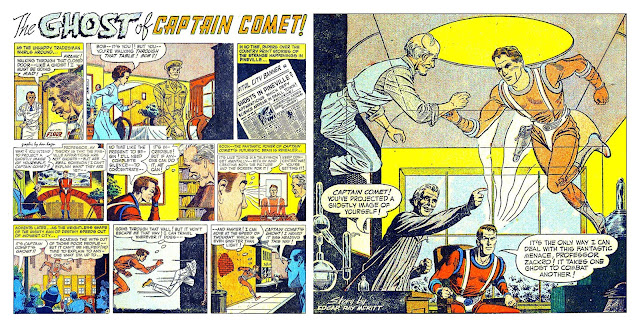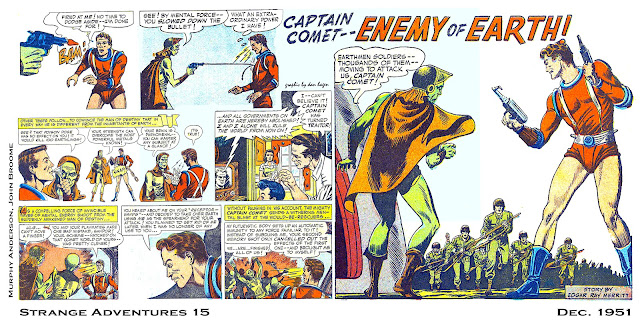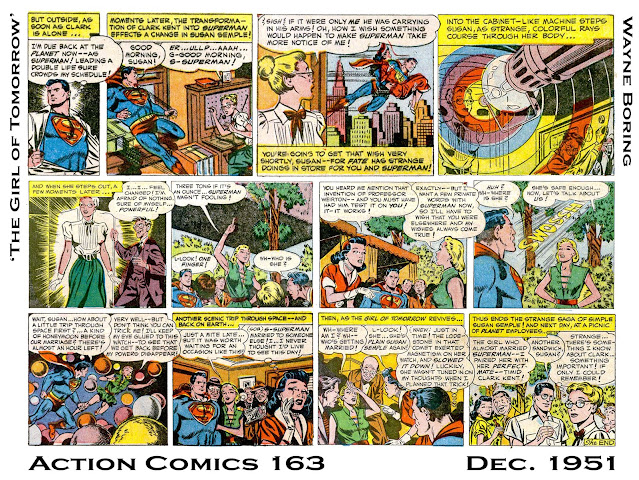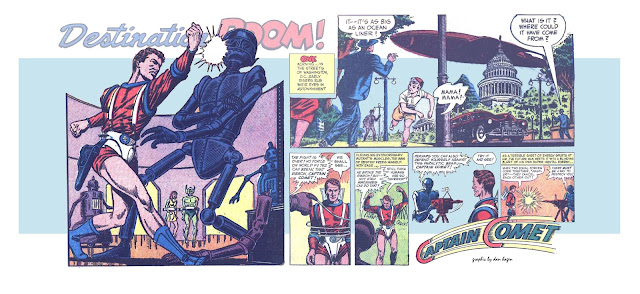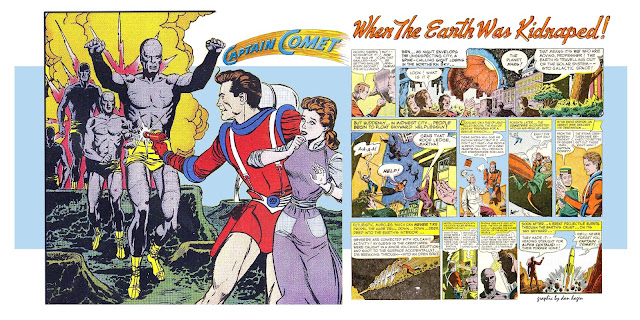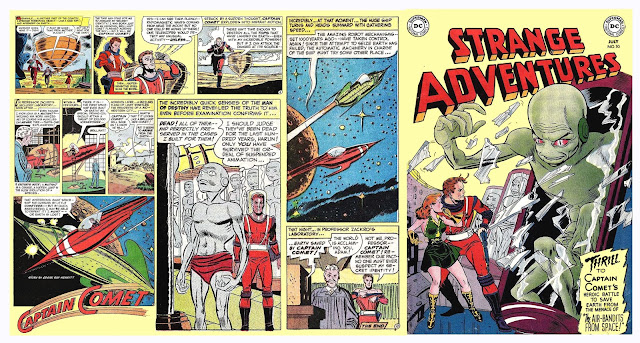February 1952: Telepathy by Television
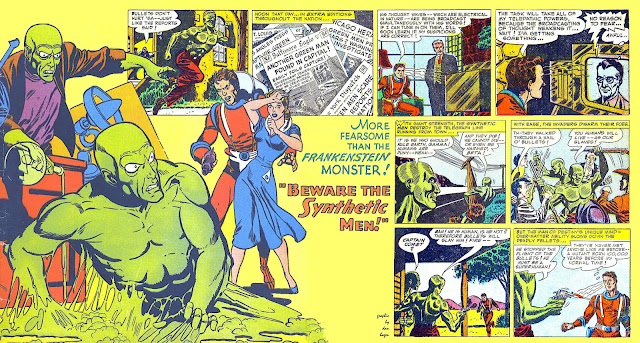
The original science fiction novel, Mary Shelley’s Frankenstein, is the explicit inspiration for Beware the Synthetic Men! in Strange Adventures 17 (Feb. 1952). Rumors of green men in Washington, D.C., prompt a televised government spokesman to brand them a myth, but Captain Comet telepathically sees through that lie. “No reason to fear,” broadcasts Dr. Stanton, the “nation’s science-defense chief” (didn’t know we had one). “Great Galaxy!” says Captain Comet. “He’s saying one thing — thinking the exact opposite!” For a mutant 100,000 years ahead of his time, Captain Comet could be remarkably naïve about politics. Or is it simply that morally and intellectually advanced beings like Adam Blake would necessarily see the ultimate futility of lying? “What’s most interesting about this tale is the use of television,” observed comics historian Michael E. Grost. “One of Captain Comet’s seemingly endless powers is the ability to read thoughts. After all, he explains that thought
